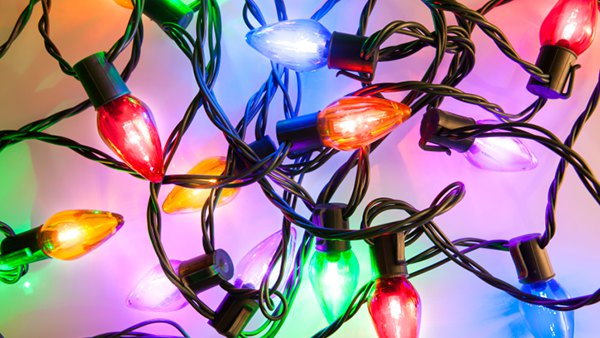Holiday lights can brighten the season – literally and emotionally – but they also present potential risk for fire and shock hazards. Before installing holiday lighting, take extra time to do a safety check to protect people and property.
Holiday lights and other decorative lighting contribute to an estimated 150 home structure fires per year, according to the National Fire Protection Association, with an average of nine deaths, 16 injuries and $8.4 million in direct property damage per year. Electrical failures or malfunctions were factors in 64 percent of the fires.
Reduce the risk of fire and shock from holiday lights by taking these steps recommended by the Consumer Product Safety Commission:
- Use indoor and outdoor lights that conform with safety standards and that have been tested for safety by a recognized testing laboratory.
- Use only lights that have plugs containing fuses.
- Check each set of lights, new or old, for broken or cracked sockets, frayed or bare wires or loose connections. Throw out damaged sets. Always replace burned-out bulbs promptly with the same wattage bulbs.
- Ensure extension cords are rated for the intended use.
- Forego electric lights on a metallic tree. The tree can become charged with electricity from faulty lights, and a person touching a branch could be electrocuted.
- Check labels before using lights outdoors to be sure they have been certified for outdoor use.
- Stay away from power or feeder lines leading from utility poles.
- Fasten outdoor lights securely to trees, house walls or other firm supports to protect the lights from wind damage. Use only insulated staples (not nails or tacks) to hold strings in place. Or, run strings of lights through hooks (available at hardware stores).
- Turn off all holiday lights when you go to bed or leave the house.
- Use caution when removing outdoor holiday lights. Never pull or tug on lights – this could cause stress on the connections that could create a fire hazard.
- Plug outdoor electric lights and decorations into circuits protected by ground-fault circuit interrupters (GFCIs) to protect against electric shock. Portable outdoor GFCIs can be purchased where electrical supplies are sold. GFCIs can also be installed permanently to household circuits by a qualified electrician.
A large proportion of lights sold today are LED technology, and for good reason. In addition to being sturdier and more resistant to breakage, LED holiday lights last longer and consume 70 percent less energy than conventional incandescent light strands. It costs only $0.27 to light a 6-foot tree for 12 hours a day for 40 days with LEDs compared to $10 for incandescent lights.
A new safety rule for seasonal and decorative lights went into effect in 2015, allowing the CPSC to remove hazardous seasonal and decorative lights from the market faster and more effectively. If lights do not meet safety standards, the agency can require the manufacturer to recall the lights and can block imports of unsafe lights.
As you inspect newly purchased lights, check for:
- wires that appear frayed, damaged or inadequate to carry the current according to the manufacturer’s instruction
- strands that do not remain intact and functioning or pull out of the plug when stretched
- lights that do not shut off to guard against excess current – such as with a fuse or ground fault circuit interrupter
To report a dangerous decorative or seasonal light, go online to www.SaferProducts.gov, call CPSC’s Hotline at 800-638-2772 or use its teletypewriter for the hearing impaired at 301-595-7054.
This loss control information is advisory only. The author assumes no responsibility for management or control of loss control activities. Not all exposures are identified in this article.

